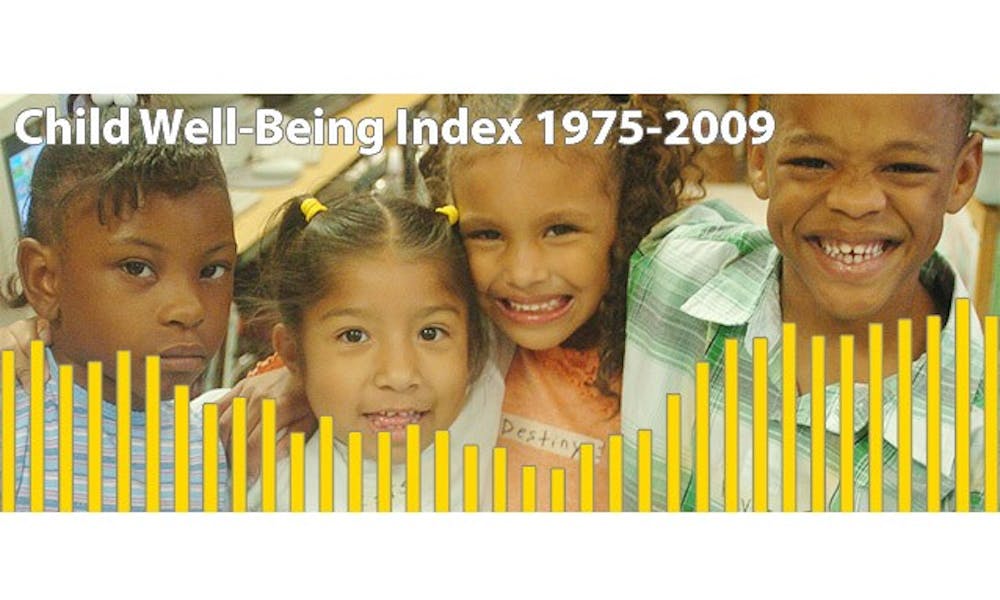This year, child poverty levels in the United States are estimated to be the highest they have been in 20 years, according to a June study.
Approximately 21 percent of children, or 15.6 million, will be living in poverty in 2010, according to the study’s estimate. Half of those children will be living in “extreme poverty,” defined as below 50 percent of the poverty line. These findings come from The Child and Youth Well-Being Index Project, a yearly analysis funded by the private philanthropic group, the Foundation for Child Development.
This year, child poverty levels in the United States are estimated to be the highest they have been in 20 years, according to a June study.
“Eight million jobs have been lost.... Even if there are two earners in a family and one earns 40 to 50 percent of income, that’s a huge hit on family income if one loses [his or her] job,” Land said.
This year’s report, which took into account trends from 1975 to 2008, used 28 indicators of well-being. These measures were then grouped into seven categories like economic well-being, safe and risky behavior and health. In compiling the report, researchers used data from sources like government reports.
The study also looked at indirect impacts of job loss, including the impact of economic instability on the nutritional value of food and childhood obesity.
Land linked national poverty trends to Durham County’s own budget issues.
“After two years of deep recession, public sector budgets are cramped… governments are trying to balance budgets, and in many cases the tax shortfalls are leading to cutbacks in public sector programs that affect youth be it pre-K programs, be it teachers…. Durham County, for example, is struggling to find resources to not lay off as many teachers… next fall,” he said. “And some [places] are cutting back to four day schools instead of five day schools.”
Land added that although the study’s purpose is to report the statistics, researchers hope it motivates several entities, from families to governments to civic organizations, who should be the players ensuring that children’s needs are prioritized.
Kenneth Dodge, William McDougall director of the Center for Child and Family Policy, pointed out, however, that increasing government funds for children’s interests doesn’t have to be the only answer.
“Money might make a difference, but on the other hand, a lot of money can be wasted,” he said. “And there are also other policies that don’t involve direct expenditure of money [like] the Family Medical Leave Act [which] provided time for parents to stay home with their baby…. It yielded positive outcomes for children. [Improvement] doesn’t have to be measured only in dollars but measured in how the dollars are spent.”
Whatever the solution, the study did offer some hope—the analysis suggests that the effects of the recession will be at their worst in 2010 but will show signs of slow recovery in 2011 and 2012.
Get The Chronicle straight to your inbox
Sign up for our weekly newsletter. Cancel at any time.

